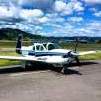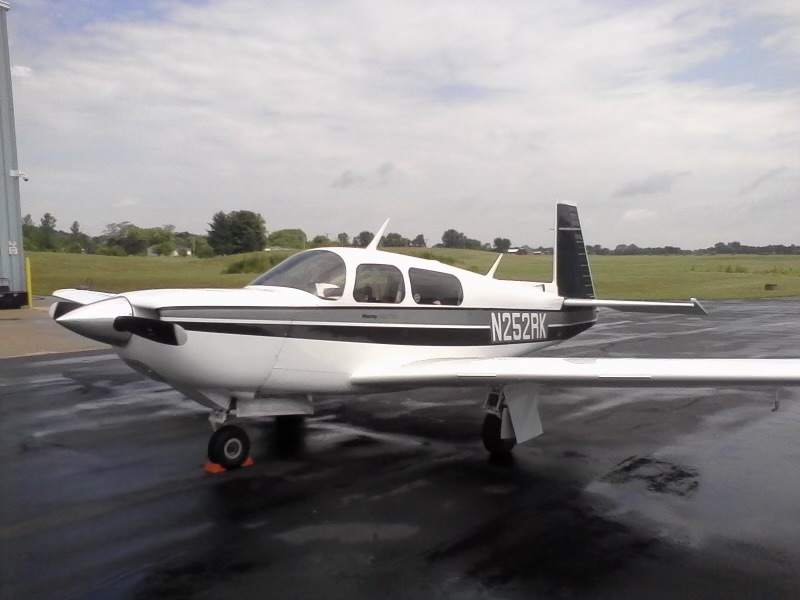-
Posts
5,485 -
Joined
-
Last visited
-
Days Won
25
Content Type
Profiles
Forums
Blogs
Gallery
Downloads
Media Demo
Events
Everything posted by Ragsf15e
-
Except you have to read very far down in the tcds notes, the “small print”. There’s an allowance to remove the vacuum for all models equipped with appropriate certified electronic ADI systems. your link is from 2002, and potentially not current. Heres the current faa: https://rgl.faa.gov/Regulatory_and_Guidance_Library/rgMakeModel.nsf/0/6ea0f05ecca8304486258305006833cf/$FILE/2A3_Rev_58.pdf
-

Removing the Windshield mounted OAT gauge
Ragsf15e replied to redcatcher27's topic in Vintage Mooneys (pre-J models)
Generally people move the temp probes under the wing maybe 8-12 inches back from the leading edge and out a couple feet from the root. There are some convenient inspection plates. There’s also a factory location further out that was used on later models. Either way, out of the sun and away from the engine and prop wash is good. -

New Engine installed - no fuel pressure.
Ragsf15e replied to Igor_U's topic in Vintage Mooneys (pre-J models)
Sorry to hear you’re having to deal with this. Definitely sounds like it’s something related to the engine and not the line or sensor. Curious though… where is your fuel pressure line connection? Mine is on the top/back of the fuel servo, right behind the air intake. -
Using your example may indicate that the insurance folks think the twins are safer. If same hull value costs the same to insure, but repairs cost double, they must be seeing less claims overall. Or at least less big liability claims.
-
Yeah, definitely. We need one of our math geniuses to make sense of it though… twins have twice as many chances for something to fail, but a much lower chance of off field forced landing if a failure occurs. In some instances (high DA, low alt), a twin with one engine might be as bad or worse than a single without an engine if the pilot doesn’t act exactly right. Then there’s the fact that we’re lumping all twins together… an Apache and a King air should have a much different outcome for a takeoff failure, except there’s the KA that hit Flight Safety…. It’s pretty tough to make a reasonable comparison.
-
Sounds like having a twin gave him more options to shut down early to prevent further damage and to be picky with his divert airfield, but not necessarily the difference between living and dying.
-

A good run . . . thanks . . . smooth air and tailwinds to you.
Ragsf15e replied to bumper's topic in General Mooney Talk
Awesome picture and awesome place to live. I really love the eastern Sierras. -
The cgr / cgp or gi275 eis systems are compelling if you have a standard instrument hole that you can use because there’s little to no panel cutting. Much of the wiring is done in the engine compartment and little behind the panel. Yes, I know they’re small, but they’ve got all the info and keep the panel mod to a minimum.
-
Good to hear it’s mostly working well for you. I haven’t had much trouble ROP or LOP keeping the engine cool enough until it was super hot in the NW last week, then I had about as you described. Typically 100 ROP is about 10 degrees hotter chts than before which is just fine. I’d recommend looking at your baffles and making sure they are in good shape.
-
How did the plugs look? They are often the first evidence of running rich on the ground like flight school airplanes. I agree it doesn’t sound like you run it for a long time on the ground, but even for a short time, you should be very lean. Even if you run it up, you can likely stay pretty lean. You will have to richen a bit, but you can do the mag check lean. Since you’re at low power on the ground (even 2000 rpm), you can’t hurt the engine. Just start it, check for oil pressure, set 1000-1200 rpm, then immediately pull the mixture until it stumbles/dies. Push it in just barely far enough to idle smooth. In this condition, if you add power to taxi (or takeoff) it will stumble and likely die. Add a slight turn of mixture if you require more power for taxi, but strive to stay as lean as possible on the ground. Same after landing, as soon as you exit the runway, lean it aggressively. Good luck!
-
Interesting, I always heard climb/cruise should be hot enough to burn off or convert extra lead. Are you leaning real aggressively right after start and soon after landing?
-

A good run . . . thanks . . . smooth air and tailwinds to you.
Ragsf15e replied to bumper's topic in General Mooney Talk
Well below about 20,000’, you probably got the crap kicked out of you. Now if you’re in a glider and manage to get above all the rotor, you can ride that wave really high! I wanna say they’ve done 30,000-40,000’ out of Minden. -
I am for sure! Hit me up after school starts for the little kids in September… so much more time!
-
Honestly not much to see. Just treat it like normal ROP or LOP ops. Above about (very roughly) 5000’, timing advances slowly with altitude. You might start to notice very slightly warmer chts. In cruise, there’s not much difference in ROP with the timing advance, however, LOP works better to extract a little more power with the advance. Chts are plenty cool either way, but I’m maybe about 3kts faster LOP now than before the SF. Basically no change if running ROP.
-

A good run . . . thanks . . . smooth air and tailwinds to you.
Ragsf15e replied to bumper's topic in General Mooney Talk
Ha! That’s where I got my ppl in ‘91. Yeah, if the winds are from the west at more than about 10kts, you’ll be much better off on the ground… unless you’re in a glider, winter flying suit, and have O2 so you can get up into the wave! -
Glad the SF works for you! Opens up the option of using advanced timing too (assuming you’re not TC). It’s real nice LOP around 9-11,000’.
-

100 hours flown 4 months since annual.
Ragsf15e replied to warrenehc's topic in Vintage Mooneys (pre-J models)
Oil changes, good visual inspection for leaks or chafing in the engine compartment and fly on! 100hr not required if it’s not rented or used for other commercial enterprise. -

Slips in a short body E or C
Ragsf15e replied to Pilot boy's topic in Vintage Mooneys (pre-J models)
It might not be as accurate, but normal airspeed is a reasonable target for slipping. As others said, nose down and around your typical final airspeed of 80ish mph is good. Few knots faster is fine, never slower than normal final airspeed. -
I don’t think this is true for the OP. He has an stec 30 AP like me. It doesn’t rely on attitude input like kap, kfc, century APs. It’s rate based off his turn coordinator. Anyway, it only needs a heading input and/or gpss which the G5s can provide. My G5s drive my STEC flawlessly. You are correct that the gi275s are required for attitude based autopilots though.
-

What's a 1963 C in great shape worth?
Ragsf15e replied to CPeterJr's topic in Vintage Mooneys (pre-J models)
Yes, you want it insured for it’s full value, but over-insuring isn’t a good idea. If you cause significant damage, the insurance company will pay to “fix” it, but you’ll be left with an airplane potentially worth much less after significant damage history. Not to mention the time involved in those kind of repairs. If it suffers enough damage to be “totaled” you want them to write a check that could buy you pretty much what you just lost.



